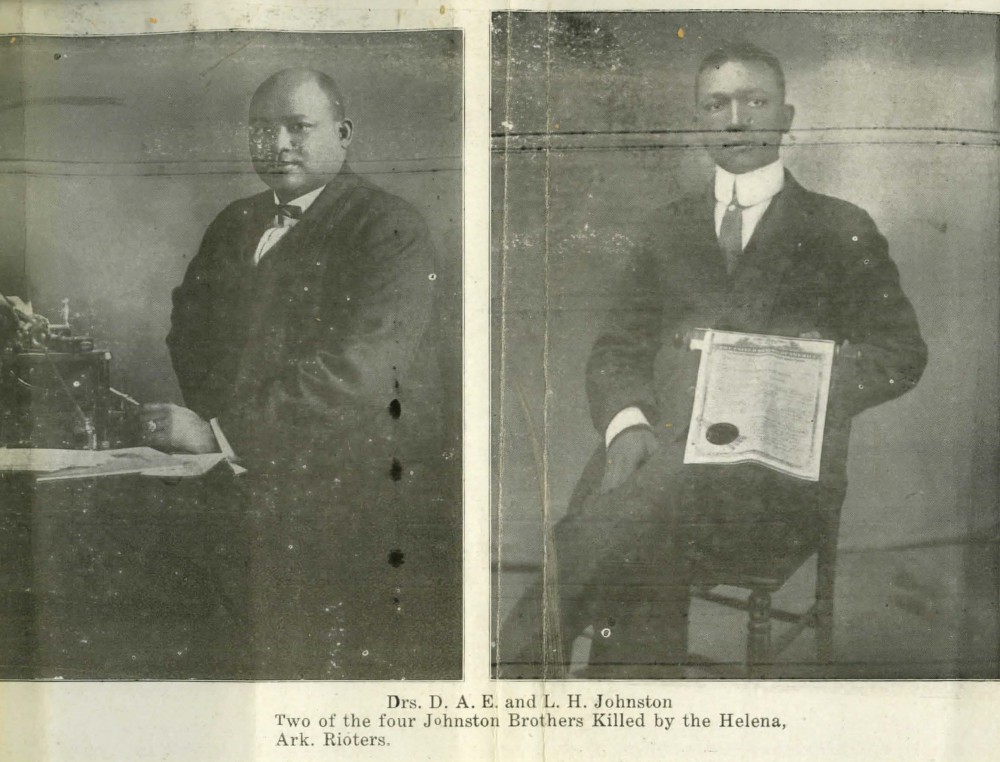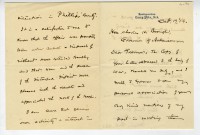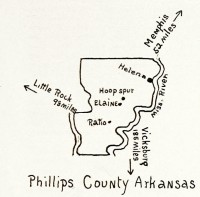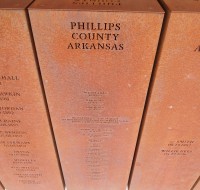The Long Shadow of the Elaine Massacre
This exhibition commemorates the 100th anniversary of one of the deadliest racially-motivated conflicts in American history—the Elaine Massacre, which devastated rural Phillips County, Arkansas, in 1919.

Between September 30 and October 7, 1919, anywhere from 25 to more than 200 African Americans are reported to have been killed in Phillips County, Arkansas, along with five white men. Their killers included local law enforcement officials and those they deputized, informal posse members, and federal troops. The event culminated in more than 100 African-American men being tried, and with 12 being sentenced to death. For the black victims of the Elaine Massacre, there was no justice, however, as no perpetrators of violence against African Americans were ever prosecuted, nor were any charges even filed against them.
In 2019, Arkansas commemorates the 100th anniversary of the Elaine Massacre, and continues to reckon with the lasting impact of this tragedy. This exhibit explores the context leading up to the Massacre, including the return of veterans from World War I, and exploitative labor practices that victimized southern sharecroppers, as well as the event itself, the rush to trials and imbalanced justice in its aftermath, and finally the more recent attempts by scholars, community members, and descendants to broaden understanding of the conflict and its legacy.
Manuscript collections with related materials in Special Collections include:
(Click thumbnail image to enlarge.)

Correspondence from Major General Samuel D. Sturgis to Governor Charles Brough
October 19, 1919, letter from Major General Samuel D. Sturgis, commander at Camp Pike, praising Arkansas Governor Charles Brough’s action in calling federal troops to Phillips County. (Charles Hillman Brough Papers (MS B79) Box 4, Folder 55, item 4-96)

Map of Phillips County, Arkansas
Map of Phillips County, Arkansas, reproduced from The Crisis Vol. 19, No. 2 (December 1919), page 59. The Crisis, which began publication in 1910, is the magazine of the National Association for the Advancement of Colored People (NAACP), and was one of the national publications that offered substantial coverage of the Elaine Massacre.


Phillips County marker at National Memorial for Peace and Justice
The National Memorial for Peace and Justice was established in Montgomery, Alabama, in 2018 to commemorate American victims of lynching. Among the more than 800 steel slabs representing counties with documented lynching deaths, one recognizes Arkansas’ Phillips County, stating alongside the names of known victims, that “at least 229 unknown individuals were lynched during the Elaine Massacre.” (Photograph courtesy of Christine Windon, 2019)